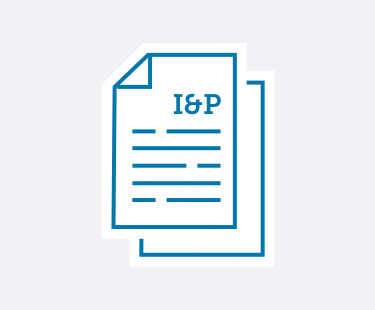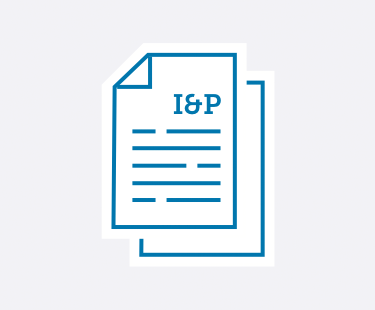

Learn practical strategies to handle emerging trends and leadership challenges in private schools.
No matter if you’re a School Head, Admission Director, Development Director, Board member, or any other private school administrator—Ideas & Perspectives, ISM’s premier private school publication, has strategic solutions for the pervasive problems you face.
- Tuition not keeping pace with your expenses? In I&P, explore how to use strategic financial planning to create your budget and appropriately adjust your tuition.
- Enrollment dropping off? Discover how to implement the right admission and enrollment management strategies that engage your community—and fill your classrooms.
- Trouble retaining teachers? Learn how you can best support your teachers using ISM’s Comprehensive Faculty Development framework. Your faculty members will become more enthusiastic about their roles—which ultimately improves student outcomes.
- Fundraising campaigns not as successful as you’d hoped? Implement ISM’s practical advice and guidance to build a thriving annual fund, construct an effective capital campaign, and secure major donors—no matter your community size or location.
- Not sure how to provide professional development—for you and your staff? Learn ways to develop and fund a successful professional development strategy. You can improve teacher-centered satisfaction and growth, which in turn strengthens student-centered learning.
- Problematic schedule? You can master the challenges of scheduling with the help of ISM’s practical advice, based on our experience with hundreds of schools and our time-tested theories.
- And so much more.
I&P has shared targeted research, up-to-date insight, and sound theory with school leaders since 1975. More than 8,500 private school decision-makers find the answers to their schools’ administrative and governance matters in our advisory letter. We give you the strategic answers you need.
As an ISM Silver or Gold member, you not only receive issues online and in print 10 times a year, but you have access to more than 600 articles in our web archive. Need help? It’s at your fingertips! Learn more and sign up for ISM's membership here.
Search
See the articles from our latest issue of Ideas & Perspectives.
Strengthen the School/Development Director Tie
Volume 26 No. 9 // July 20, 2001
The results of the ISM 2000-01 Development Director Survey implied that increasing salary could help attract and retain a quality fund raiser. However, other factors are also involved, and the responses suggested methods for bonding this administrator to the school’s community. As Head of School, take the following steps to support and nurture the Development Director and cement his or her relationship with your school.
1. Already a member? Click here to login.
2. Not a member? Click here to become a member.
3. Not sure? We'll help you figure it out.
The Development Director Survey, 2000-01: Salaries
Volume 26 No. 8 // June 28, 2001
ISM recently surveyed a random sample of Development Directors from our I&P subscriber schools; 277 responded. (See “About the Respondents” for more information on survey participants.) This article focuses on the competition that private-independent schools face in hiring and retaining Development Directors, and on the role salary plays in this process.
1. Already a member? Click here to login.
2. Not a member? Click here to become a member.
3. Not sure? We'll help you figure it out.
Technology and Student Achievement: Implications of the ‘West Virginia Story’
Volume 26 No. 7 // June 8, 2001
Spurred by competition with other schools, parental and societal demands, and the hope of enhancing their educational programs, schools have raised money, built/renovated facilities, and hired additional staff, all to give students access to technology. Now that the computers and infrastructure are in place, Boards and Heads want to know what benefits to expect from improved technology and when they can begin seeing them. Teachers want to know the expectations of the administration and Board. Everyone wants to measure whether the investment in technology has improved learning.
1. Already a member? Click here to login.
2. Not a member? Click here to become a member.
3. Not sure? We'll help you figure it out.
Define and Prioritize the Head’s Major Tasks
Volume 26 No. 7 // June 8, 2001
The challenges of leading a private-independent school are increasing daily. Schools are offering more programs (curricular and cocurricular) than they did even five years ago. They are expected to provide more services designed to meet the needs of students (counseling and learning resources) and parents (extended day and summer programs). Annual fund drives are more intensive and capital campaigns more frequent. There are more faculty and staff to manage. In this “more, better, faster world,” as Head, you are expected to manage an expanding and complex set of tasks.
1. Already a member? Click here to login.
2. Not a member? Click here to become a member.
3. Not sure? We'll help you figure it out.
Your Faculty’s Role in the Admission Process
Volume 26 No. 5 // April 15, 2001
When a new student behaves poorly or seems unable to compete academically with peers, faculty members often ask the questions, “Why did we accept her?” and “Who let him in?” Teachers who do not play a role in admission or miscomprehend the process often view the entry process as a “numbers game.”
1. Already a member? Click here to login.
2. Not a member? Click here to become a member.
3. Not sure? We'll help you figure it out.
Strategic Board Evaluation
Volume 26 No. 4 // March 28, 2001
In 1996, ISM identified 10 “ISM Stability Markers®” for use in strategic and long range planning. The Stability Markers, organized into a prioritized list, were derived from variables associated with a private-independent school’s capacity to sustain excellence. The top-ranked Stability Marker was, and remains, the Board’s self-definition. Boards viewing their mission as essentially “strategic” comprise the best indicator/predictor of institutional stability. These Boards focus on long-term financial viability, and are organized annually into “task units” (i.e., Board committees) formed to advance the school’s planning document. Boards viewing themselves as “current events/operations oversight” entities (the antithesis of the “strategic” Board) were associated with inability to sustain excellence.
1. Already a member? Click here to login.
2. Not a member? Click here to become a member.
3. Not sure? We'll help you figure it out.
The Hunt for Lost Alumni: Four Strategies to Bring Them Home
Volume 26 No. 3 // March 8, 2001
In today’s fast and fluid society, your alumni can easily become “lost” to your school. Despite attempts to maintain a database of current postal addresses, e-mail addresses, and phone numbers, your Development and/or Admission Office will often find it difficult to track all of your former students. Unfortunately, many schools contact their alumni only during fund-raising campaigns; it’s no wonder many alumni drift away. Convince them that you are truly interested in their lives and concerns – not just their wallets. Enhance their sense of connectedness with and ownership of your school. They will reward your efforts with their valuable support, financial and otherwise.
1. Already a member? Click here to login.
2. Not a member? Click here to become a member.
3. Not sure? We'll help you figure it out.
Board Bylaws, Institutional Dissolution, and Bylaw Changes
Volume 26 No. 3 // March 8, 2001
One aspect of the due diligence rightly expected of you, the Board President, is a periodic review of Board bylaws. You should have them reviewed at least quadrennially, for accuracy, relevance, and technical legal compliance with appropriate statutes. If you also aspire to implement ISM’s “strategic Board” concepts, you should have the bylaws altered to reflect those aspirations.
1. Already a member? Click here to login.
2. Not a member? Click here to become a member.
3. Not sure? We'll help you figure it out.
What the Head Must Know About the Business Manager’s Work Environment
Volume 26 No. 2 // February 13, 2001
ISM recently surveyed Business Managers about their salaries and their work environments. We randomly selected 627 Business Managers from our I&P subscribers; 417 responded.The preceding issue of I&P focused on results from the survey concerning salaries for this position. This article discusses responsibilities, workload, and priorities – and how you, the Head of School, can best support your school’s Business Manager.
1. Already a member? Click here to login.
2. Not a member? Click here to become a member.
3. Not sure? We'll help you figure it out.
The Business Manager Survey, 2000: Salaries
Volume 26 No. 1 // January 14, 2001
ISM recently surveyed Business Managers about their salaries and their working environments. We randomly selected 627 Business Managers from our I&P subscribers; 417 responded. (See “About the Respondents” last page of this article for more information on survey participants.) This article examines Business Managers’ salaries and implications for recruitment and retention; a subsequent article will focus on Business Managers’ responsibilities and work conditions.
1. Already a member? Click here to login.
2. Not a member? Click here to become a member.
3. Not sure? We'll help you figure it out.


